Golden Globe: Bothersome Barnacles
Published on October 29th, 2018
(October 29, 2018; Day 121) – When Uku Randmaa set off from the BoatShed.com Film gate in Hobart in third place within the Golden Globe Race fleet last Saturday, he was not thinking about closing the gap between 2nd placed Dutchman Mark Slats, but how to keep ahead of 4th placed Susie Goodall, due into Hobart tomorrow night.
His problem? Barnacles. The bottom of his Rustler 36 One and All is covered in them, and not being a keen swimmer, he is left wondering how to get rid of all these speed-sapping encrustations. It is not helped by the fact that he forgot to pack his mask and fins before leaving Les Sables’ d’Olonne at the start of the Race
The barnacle growth on Randmaa’s yacht, One and All, is a problem shared with several skippers. Is the cause a failure of modern antifouling systems, or simply not applying enough paint?
Don McIntyre, the Race Chairman currently in Hobart to welcome the leading sailors, reports: “I’ve never seen anything this bad in my entire sailing life. I felt so sad waving goodbye knowing that they will continue to grow every day to the finish. He left with a best estimate drag penalty of 0.5 – 1knot for every hour he is sailing. That’s 12-24 miles lost every day for the next 100 days!”
But the Estonian sailor is not alone with his dilemma. Finnish entrant s Tapio Lehtinen, currently languishing in 6th place, reported the same issue yesterday. Wondering why his Gaia 36 Asteria was not keeping pace with Susie Goodall’s DHL Starlight, and losing ground to Istvan Kopar’s Tradewind 35 Puffin, two weeks ago, the two were trading places on an almost daily basis.
He dived over the side to check his rudder and was shocked to find the hull infested with goose barnacles. It answered his question, but being down at 41°S, the water temperature is around 11°C, which he decided was it too cold to hang about in. The encrustations proved too hard to remove anyway and Tapio says that he will need to make a scraper between now and Hobart, ready to tackle the problem there.
Mark Slats has also suffered from a barnacle infestation on his Rustler 36 Ohpen Maverick. On October 4, the Dutchman reported: “I was incredibly surprised how many barnacles were attached on the bottom of the boat. I went into the water during a calm period and needed 2 hours to clean the bottom. I used a filling knife followed by sandpaper and then finished with a scourer. I came out of the water like an ice cube. The water was freezing cold and really hurt my forehead, but after fifteen minutes you get used to it.”
Are these experiences a damning indictment to the ineffectiveness of modern antifouling paints? These boats all had their bottoms painted at the end of May and the coatings have not even lasted 6 months, and for the last 6 weeks or so in very cold water.
Lionel Regnier, who assisted both Uku Randmaa and GGR leader Jean-Luc Van Den Heede during their final preparations, says: The antifouling was applied to Uku’s boat just after Jean-Luc’s. Uku’s had only 2 coats applied, but Jean-Luc who used the same process and applicator, had a third coat plus a ‘hot’ top coat mixed with copper powder which erodes as the boat passes through the water. The only barnacles are attached to the gel coat.”
Early today, Jean-Luc, now almost half way across the Pacific, some 2,000 miles ahead of Mark Slats, reported by satphone that he had been running under spinnaker for the past 48 hours and making 7knots. “Spinnaker up night and day! A little too stressful to sleep!”
He has only a couple of barnacles on the hull above the antifouling and says, “It feels like a Pacific cruise with easy miles.” The 73-year old added that he still has a good variety of food onboard including onions and garlic, 150 litres of water, and plenty of wine! Apart from his family, he is missing nothing. The Matmut skipper expects to round Cape Horn on November 21.
Barnacles apart, Randmaa was also in good spirits at the Hobart stopover, despite losing weight. “Yes, I have lost some kilograms, and will lose more, so I will be looking much younger when I get back to the finish” he joked.
And fun? “That is one of the most important things. You have to be enjoying yourself, but sometimes it is hard!” He also expressed satisfaction with his choice of boat, “Rustlers are 1st to 4th, and I have no issues with the rig or sails.” He did however admit that he only had one winch handle, after forgetting to pack spares.
Of storms, he said every one was different. “During one, I took all my sails down. I don’t have a drogue, I believe it is too dangerous to stop the boat, but in bad conditions I tow warps, which keeps the stern facing the seas. During one storm I used my spinnaker sheets, they were dirty and needed a wash, and towed four of them behind the boat.”
He says that the worst damage to sails can often occur during calms rather than storms. “It is not good for them to flog about, so I take them down. I may lose some miles, but worth it (to avoid damage).”
For the full interview click here.
What has happened to the yachts abandoned in the Indian Ocean?
Frenchman Loïc Lepage cut one of the inlet pipes to scuttle his dismasted Nicholson 32 Laaland before he abandoning her for the safety of the Japanese bulk carrier Shiosai on October 22 and the yacht’s tracking signal stopped within a few hours signaling that she had sunk.
But Abhilash Tomy’s Thuriya and Hanley Energy Endurance skippered by Gregor McGuckin, both abandoned some 45 miles south of an International Marine Reserve surrounding the Amsterdam and St Paul chain of Islands on September 23 were left afloat. The battery running Thuriya’s tracker ran out of power on October 3, but that on Hanley Energy is still pinging away on the GGR tracker.
What state is she in? Could she be salvaged? Australian Mark Sinclair trailing in 7th place aboard his Lello 34 Coconut passed close to Amsterdam Island last Friday and is now within 180 miles of the Irish yacht. He has agreed to try and intercept her position during the next two days, photograph her and report back on her condition.
Other interceptions
Is there much shipping in the Southern Ocean? Appears so. Istvan Kopar and his yacht Puffin were spotted and photographed in good order last night (Sunday) by the French warship L’Astrolable, and the Japanese bulk carrier Shiosai which rescued Loïc Lepage last week, sailed past Igor Zaretskiy’s Endurance 35 Esmeralda yesterday. The ship communicated with Igor on VHF and reported “All OK” aboard.
Susie Goodall ETA at Boatshed.com Hobart Film Gate
Susie Goodall is now expected to arrive at the Boatshed.com Hobart Film Gate some time between 08:00 UTC (00:00 local) and 18:00 UTC on October 30th (06:00 local on October 31).
Letter from Loïc Lepage
In his first communication since being picked up by the Japanese bulk carrier Shiosai on October 22, Loïc Lepage has written a first-hand account of his dismasting and rescue, throwing new light on his experiences (translated from French).
Hi Don,
After a few days, I want to explain the circumstances surrounding my dismasting.
Saturday, October 20 (16.00 local – 10.00 UTC) – Wind SW 25-30 knots and more under frequent squalls. Sea quite strong (4 – 5m). Mainsail set with 2 reefs and jib, broad reaching on starboard tack. Speed 6 knots and more in the squalls. I was reading inside boat.
During one of these squalls I heard the sound of metal breaking in the wind. Time to put on my boots. The mast is tilted a few degrees and is now out of its step on the keel. The lower rear stay had broken. I took over steering from the wind vane and decided to gybe (a faster maneuver than tacking in these seas). By the time Laaland reacts, the mast has taken a greater inclination. It is the running backstay that has now broken. The mast breaks 50cm above the deck. It’s finished.
The whole thing lasted just a few minutes. I was booted but only wearing underwear, am soaked through and take the time to change. I come back out with bolt croppers, hacksaw, and pliers to cut away the mast. While releasing the rigging, I notice that the origin of the break is at the vang connection to the mast. The backstay has “scalped” the aerial of the Hydrovane wind vane.
By the time it takes to release everything, the mast has hit the hull under the waterline 3 or 4 times whenever the boat dived into the waves.
I leave the forestay attached to the mast as a floating anchor and Laaland is “stabilized” in this strong sea.
It is 18.00 (local), it is night and I report the situation to GGR Race Control. I tell them that I am waiting for daylight before setting up a jury rig. At this point, the boat is still “dry” and I thought that the mast knocking against the hull had only left a few scratches!
A few hours later, around 23.00, I saw water under my bunk (I sleep in the center between my 2 boxes of supplies). There is a waterway. I am looking for the origin of the leak: It is located at the bottom of the hull, at the level of the water tank, under a moulding housing the toilet.
I began to hammer this moulding but decided the hole or crack was inaccessible. It would be necessary to destroy everything: partitions and furniture, to reach this ingress of water. I have what it takes for a sealing (fast setting resin) but I’m happy for the moment to fill the gaps with what I have to hand.
The water leak flows into a sump with a capacity of about 30 liters.
I operate the electric pump that empties it in 3 or 4 minutes and estimate that it takes between 15 and 20 minutes to fill up again. I start to pump manually using the bilge pump located in the cockpit.
It was around midnight, I believe, that I reported the situation to GGR Race Control. As I had no hope of fixing this leak properly and if it got worse, I decided I would activate the EPIRB.
Sunday, October 21st – It is noon (around 6 pm after dismasting). I observed that the leak has stabilized to between 30–40 liters every twenty minutes.
I would have liked to set up the jury rig in order to make a faster northbound route towards the route taken by cargo ships, but I could not do this, and at the same time steer (I no longer had a wind vane – broken aerial) and pump every half hour. In addition, if I had used the electric pilot (sealed in my emergency pack) I would have very quickly drained the batteries. Instead I drifted north/northeast at between1 to 2 knots, driven by steady winds from the west to southwest. If I was sailing under jury rig, I would have only made 2 more knots maximum.
The solar panels are working because there are nice clearings, but the engine proved impossible to start. A wave had flooded the cockpit dislocating the plexiglass panel and drowning the starter keyboard.
That Sunday afternoon, GGR Race Control announces me that a cargo vessel is 400 miles north and could be with me on Tuesday. In the meantime, Francis Toban competing in The Long Route ” also offered to divert (he was 200 miles to the North). He missed the rescue operation rendezvous but I thank him for his dedication.
Monday, October 22nd – After drying the starter board contacts, the motor is operational and proved very useful during the rescue operation the next morning.
The cargo ship is in sight at night around 23.00. I had installed a flash light at the end of the boom which the crew saw and positioned their ship 1mile away from me. We then waited for sunrise around 5:00. The day before, an Australian Navy plane had offered to drop me a pump that I declined because the two manual pumps and electric pump were sufficient to manage the leak.
At 6:00 am we start of the rescue operation. SHIOSAI is positioned to windward about 400 meters away, but her crew decide to restart the operation, closer to me, but still leaving me outside the ship’s wind shadow.
I proposed to started my engine to position myself much closer to the ship. With engine set at full speed, I got to within 50metres when the crew decided to launch their rescue boat to pick me up.
There is still 20 to 25 knots of wind. Very quickly, I realize that the ship is not very easy to maneuver and that they have difficulty getting close enough for me to disembark. This lasts a good 20 minutes and I signal to the ship’s crew to throw me a rope to recover my three waterproof bags. That would mean less to take with me when the rescue boat arrives, only, the boat crew are having trouble disengaging from the ship’s crane and are going round and round in the water.
Suddenly, the crew suggested that I moor up against the ship. I catch the second rope and am lying about 10 metered from her stern when they drop a rope ladder. I tried to climb but my harness became tangled in a handrail and I crashed back down on the deck! I did not try a second attempt and instead, waited patiently for the rescue boat to get close enough to Laaland to grab me. Our lift back on to the ship was also difficult.
The operation will have lasted more than an hour I believe, while being overflown by the Royal Australian Navy. I had stopped pumping for about 2hours, and just left the electric pump running, but just before disembarking, I opened two seawater valves and removed the speedo probe to ensure that Laaland would sink quickly
Captain Raphaël VIRTUDAZO and his Filipino crew welcomed me warmly. Now heading to Las Palmas (Argentina) on SHIOSAI, a 280-metre-long Japanese bulk cargo ship carrying 30,000 tons of edible oil for Rutterdam. Expected arrival is on November 23rd.
– Loïc
Event details – Entry list – Tracker – Facebook
Background:
The 2018 Golden Globe Race started for 17 skippers from Les Sables d’Olonne on Sunday July 1, 2018, with the inaugural solo non-stop around the world yacht race expected to take 9-10 months to complete.
The event marks the 50th anniversary of the Sunday Times Golden Globe solo non-stop round the world race in 1968-69 when rules then allowed competitors to start from ports in northern France or UK between June 1st and October 31st.
A notable twist to the 2018 Golden Globe Race format is how entrants are restricted to using the same type of yachts and equipment that were available in that first race, with the premise being to keep the race within financial reach of every dreamer.
The rules allow for one breach of the strict solo, non-stop un-assisted circumnavigation without the aid of modern electronic navigation aids regulations that make this Race unique. However, those that do move down to the Chichester Class as if, like Sir Francis Chichester in 1966-67, they have made one stop during their solo circumnavigation.
Those who breach the rules for a second time are deemed to have retired from the GGR Event and the organisers have no responsibility or obligation to them.
Source: GGR


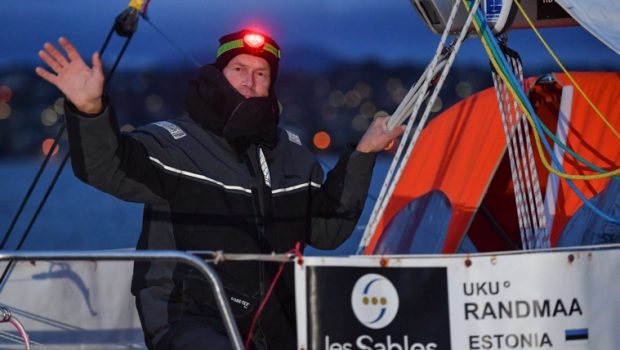

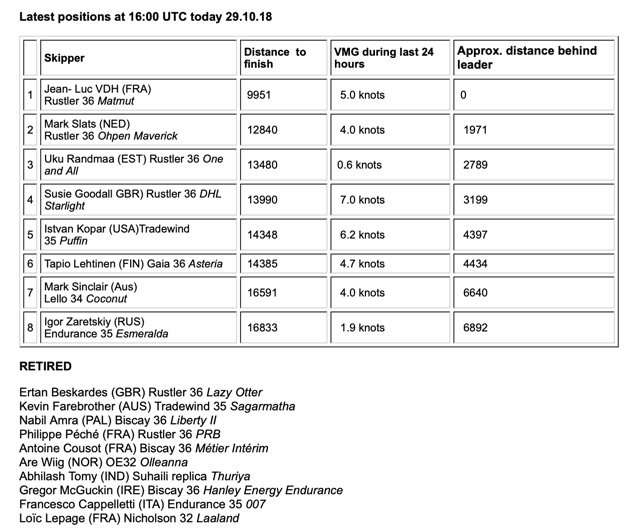

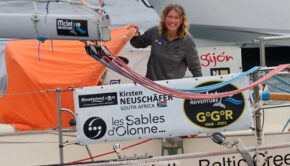
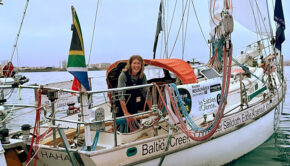
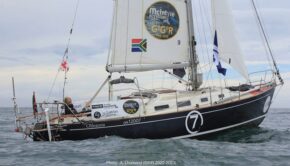
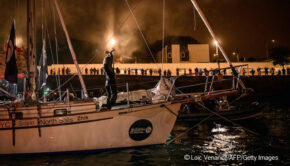
 We’ll keep your information safe.
We’ll keep your information safe.